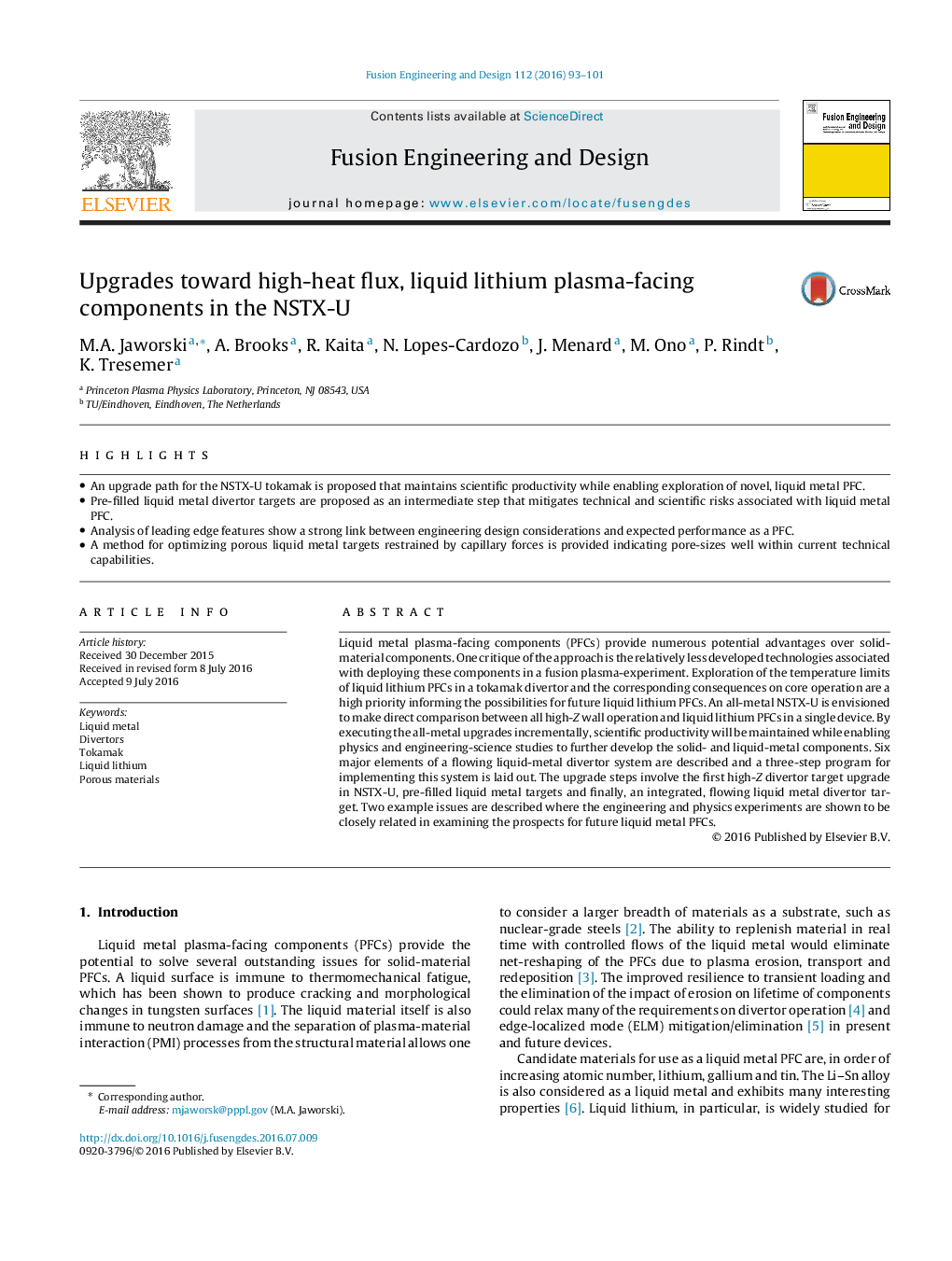| Article ID | Journal | Published Year | Pages | File Type |
|---|---|---|---|---|
| 6745327 | Fusion Engineering and Design | 2016 | 9 Pages |
Abstract
Liquid metal plasma-facing components (PFCs) provide numerous potential advantages over solid-material components. One critique of the approach is the relatively less developed technologies associated with deploying these components in a fusion plasma-experiment. Exploration of the temperature limits of liquid lithium PFCs in a tokamak divertor and the corresponding consequences on core operation are a high priority informing the possibilities for future liquid lithium PFCs. An all-metal NSTX-U is envisioned to make direct comparison between all high-Z wall operation and liquid lithium PFCs in a single device. By executing the all-metal upgrades incrementally, scientific productivity will be maintained while enabling physics and engineering-science studies to further develop the solid- and liquid-metal components. Six major elements of a flowing liquid-metal divertor system are described and a three-step program for implementing this system is laid out. The upgrade steps involve the first high-Z divertor target upgrade in NSTX-U, pre-filled liquid metal targets and finally, an integrated, flowing liquid metal divertor target. Two example issues are described where the engineering and physics experiments are shown to be closely related in examining the prospects for future liquid metal PFCs.
Related Topics
Physical Sciences and Engineering
Energy
Energy Engineering and Power Technology
Authors
M.A. Jaworski, A. Brooks, R. Kaita, N. Lopes-Cardozo, J. Menard, M. Ono, P. Rindt, K. Tresemer,
